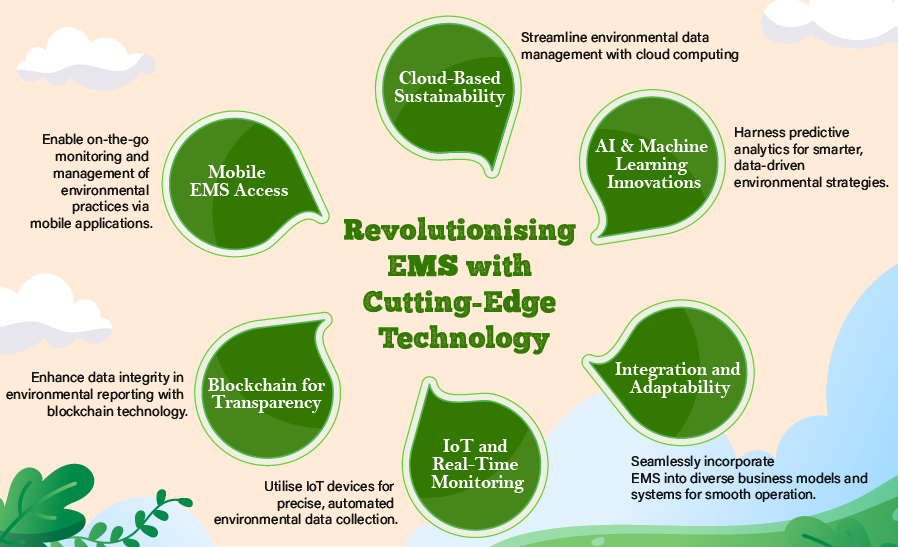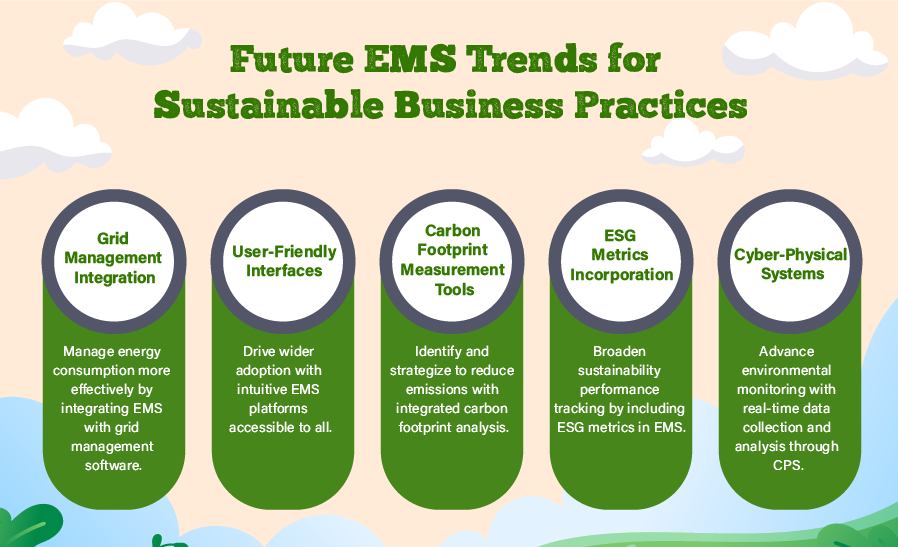Technology is constantly evolving and this is true of environment management software as well. From manually handling documentation and compliance procedures, we have come a long way in incorporating automation into our everyday workflows.
EMS software continues to evolve with technological advancements, transforming the way environmentally safe practices and sustainability are handled in business organisations. In this article, we explore the future trends of EMS and how various industries can leverage them.
What is Environment Management System Software?
An environmental management system software is a digital solution that helps you implement your environment and sustainability initiatives through the automation of various processes. It helps your organisation reduce its environmental impact, adopt sustainable practices and adopt a more ethical business model.
The environment management system software integrates the principles of modern-day environmental standards and legal requirements, ensuring that your organisation is compliant. Some of the other benefits of EMS are that it makes your workflow more efficient, reduces wastage and brings down costs.
Future Trends of EMS (Environment Management System) Software
Some trends you can anticipate for the future of EMS for Environmental Impact Management include the following:

1. Cloud Based Sustainability
Cloud-based systems would become the way-to-go for all EMS management system software. This technology leverages cloud storage and cloud computing to manage environmental data and initiatives in organisations. With an increased use of cloud technology, your organisation would be able to store, process and analyse data remotely and in real-time.
For example, a manufacturer could use a cloud-based EMS to monitor and manage carbon emissions across all facilities. This would help with real-time adjustments to EMS processes.
2. Grid Management Software
EMS software will be integrated with grid management software in the future. This software focuses on the distribution and consumption of energy across grids. Integrating grid management software with the EMS in your organisation would help you meet environmental ISO 14001 standards by managing your energy consumption.
3. AI and Machine-Learning Powered Software
Another one among the future trends of EMS will be the increased integration of artificial intelligence and machine learning capabilities to your EMS software. AI and ML enable predictive analytics, automation and smarter decision making based on real time data.
With this development, you will be able to use your EMS software to identify patterns, predict future environmental impacts and proactively manage environment-related strategies.
Machine learning algorithms can also help you to optimise your operations keeping sustainability in mind. For instance, you can reduce emissions and operational costs by using machine learning algorithms to optimise recycling processes.
4. More Adaptability and Integration
Environmental management software will continue to progress towards increased adaptability and integration capabilities. EMS will easily adapt to different business models and integrate with other systems in your organisation. This will reduce the time spent adjusting to new EMS systems, reduce training costs and ensure workflows continue smoothly.
Additionally, standards and regulations change constantly. This means that increased adaptability can help you customise your environment policies based on changing standards such as ISO 14001 EMS. EMS will make it easier for you to remain compliant and avoid penalties and fines in the future.
5. Increased Ease of Use
EMS will be made easier to use with a more intuitive interface. This will make the functionalities of EMS accessible to a wide number of users regardless of their technical expertise. User-friendly EMS software would also encourage wider adoption within the organisation. It will empower more of your employees to participate in sustainability initiatives.
EMS software that is easier to use can be a boon for smaller businesses as they can benefit from EMS solutions without having to invest in specialised staff and training.

6. Mobile Access
EMS software will also be made available through mobile devices and specialised applications. This will enable on-the-go monitoring and management of environmental data. You will be able to enter information and access it from any location and at any time.
For example, in the construction industry, site managers can use mobile devices to report on environmental compliances and monitor practices directly from construction sites.
7. IoT Integration
The integration of the Internet of Things (IoT) with EMS involves using connected devices and sensors to collect and transmit environmental data in real-time. This would allow you to monitor the management of various environment parameters across your organisation more precisely.
IoT devices can monitor continuously and provide automated data streams to the EMS software. This will enhance the accuracy of your decision-making process. An instance where this would be beneficial is in factories. They can use IoT devices to monitor emissions, energy consumption and waste generation in real time and also make adjustments without delay.
8. Blockchain Technology
Blockchain technology offers a secure, transparent way to track and verify transactions and data exchanges. This includes data related to environmental impacts and sustainability initiatives.
By incorporating blockchain technology, EMS software can ensure the integrity of environmental data. As a result, you will be able to enhance both trust and compliance with requirements such as ISO 14001 standards.
9. Carbon Footprint Measurement
Integrating carbon footprint measurement tools into EMS allows you to pinpoint major sources of emissions. This involves using advanced methodologies and tools within the EMS to measure the carbon footprint of your operations and creating targeted reduction strategies.
For example, transportation companies can measure and reduce the emissions from fleet operations. In this way, they would be able to minimise environmental impact with EMS.
10. Incorporation of ESG Metrics
Environmental, Social and Governance (ESG) metrics are increasingly being incorporated into EMS to provide a broader view of an organisation's sustainability performance. Incorporating ESG metrics into EMS software enables you to track and report on a wide range of sustainability indicators. This helps you create a more comprehensive system for sustainability management.
11. Cyber-Physical Systems (CPS)
CPS are integrations of computation, networking and physical processes, enabling more advanced monitoring and control over physical systems through cyber means. In the context of EMS, CPS can enhance the precision and efficiency of environmental monitoring and management. This would take place with the help of real-time data collection and analysis.
In Conclusion
These future trends in EMS software will result in more environmentally friendly and sustainable business practices. With new technology and advancements, EMS will become more integrated, efficient and transparent.
As your organisation grows, leveraging these new technologies will help you maintain environmental standards as well as competitiveness in a rapidly shifting market space.
Try Effivity Environment Management System Software Free Demo!






























